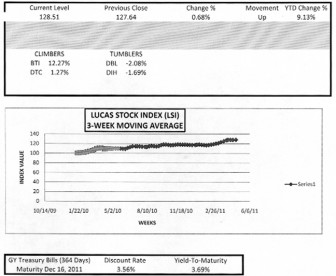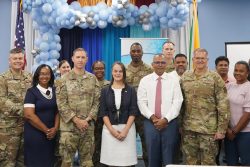Oddity
The Stabroek News of April 18, 2011 contains a comment on the performance of the sugar industry that was attributed to Mr. Donald Ramotar, the Presidential candidate of the ruling PPP/Civic Party for the upcoming general elections in Guyana. One thing of interest in the comment was the reference years used by Mr. Ramotar apparently to compare the performance of the sugar industry under the PPP/C and PNC administrations. It did appear odd that Mr. Ramotar selected 1990 in the case of the PNC and 2004 in the case of the PPP/C since neither of the two years represented beginning or end points of the two administrations. Undoubtedly, the oddity of the comparison piqued the interest of other Guyanese in the performance of the sugar industry under the two parties and probably prompted them to look at the record of sugar production since 1964.
Research on production statistics indicates that despite its sweetness, sugar has been bitter for both parties, but more so for the PPP/C. It also reveals that the record of the PPP/C might be worse than that of the PNC, now PNC/R, when measured with some key metrics. It is probably why Mr. Ramotar had to resort to years that might be of relevance to him and not the industry or the country to try and make whatever point he was trying to make.
Personal Investment

Indeed, according to the Annual Reports of 2001 and 2009 of the Bank of Guyana, Guyana produced about 131,000 tonnes of sugar in 1990 and 325,000 tonnes in 2004. It is not clear why Mr. Ramotar chose the dates but the careful calibration of the two specific years of 1990 and 2004 conveys the intention of making the PNC/R look bad and the PPP/C look good. Skipping the intervening years also creates the illusion that nothing between the years of 1964 and 2010 matters except that Guysuco expanded production after 1990 by 150 percent. The inference, of course, was that the sugar industry was much better off today than it was 19 years ago. Since the speaker had a personal investment in leaving such an impression of the industry on readers, it is reasonable to conclude also that he wanted Guyanese to believe that the country would be better off under his stewardship.
Upwards
Be that as it may, the facts of the industry create a dilemma for Mr. Ramotar and might yet be the bane of his presidential effort. They make it difficult for him to defend his leadership of Guysuco and the record of the PPP/C administration in handling this industry. Unfortunately for the PPP/C administration, when it took control of the sugar industry in 1992, production was trending upwards and in the right direction under the PNC/R administration. While production did hit a low point in 1990, it had increased by 91 percent by 1992. Output in that year reached in excess of 246,000 tonnes.
Nightmare
It is probably a nightmare for Mr. Ramotar to explain to Guyanese why he and the PPP/C should be left with the reins of power when an important industry like sugar has been so badly managed with the result that output is lower today than it was in 1992. It might have been passable if the decline in sugar output below the 1992 level was a one-time event. Distressingly for Guyanese, this comparatively poor showing occurred five times, including in the first full year of the PPP/C administration. As in many other cases, whatever experience the PPP/C acquired over the years has not helped the sugar industry. Output of sugar was one percent lower in 2005 than in 1992. Output was eight percent lower in 2008 than it was in 1992. Output was five percent lower in 2009 than it was in 1992. Output was 11 percent lower in 2010 than it was in 1992. Collectively, these losses add up to over G$6 billion or the equivalent of 117,000 laptop computers at prices cited by the administration.
The pertinent questions here for interested Guyanese are why is the sugar industry in reverse gear after it should have been in great shape in 2004? And, if Mr. Ramotar with the help of others cannot successfully manage this single entity, how can he manage an entire country?
These questions cannot be answered by the mere comparison of statistics. Nor can conclusions be drawn without a careful identification and analysis of the problems afflicting the industry. However, clues exist in the remarks of the Minister of Finance who pointed out during his presentation of the 2011 budget that there was “… need for greater improvements in managerial efficiency and effectiveness” in the sugar industry. These remarks were no doubt directed at the collective leadership of the sugar industry of which Mr. Ramotar is a part and should leave concerned Guyanese with the impression that he too cannot have much faith in the leadership ability of his Party’s candidate. Like so many other things, it is unlikely that this administration will ever get to the bottom of the problems of the sugar industry. Until clear answers are available, comparisons will have to suffice.
Best Performance
While comparing the performance of the industry between two specific points in time is a clever way to make an argument, it does not tell the full story about sugar production and the flaws of its management. Any number of metrics could be used to render a comparison of the performance of the two Parties. Equally clever would be the use of measures that rely on a single event or occurrence that can easily favour one or the other Party.
One such measure is the highest level of production attained in any one year. With this metric, the PNC/R can claim that under its watch the sugar industry produced the highest amount of sugar in a single year, 375,000 tonnes in 1971. That has never been accomplished by the PPP/C administration. The closest the PPP/C has ever reached is 331,000 tonnes in 2002, or 13 percent lower. The PNC/R can boast also that it exceeded that 331,000 level on five occasions in its first 19 years in office while the PPP/C has not been able to repeat its best performance once in its 19 years. In order to show how much faster it made things better in the sugar industry, the PNC/R can say that it achieved its highest output 7 years after taking office, while it took the PPP 10 years after taking office to turn in its single best performance, even though the industry was already on the rebound when it took over.
Better Off
Similarly, the PNC/R can legitimately claim that it was able to produce over 300,000 tonnes of sugar per year in 16 of its 29 years in office. It was able to do this over 55 percent of the times. The PPP/C can only make that claim in four of its 19 years in office or 20 percent of the times. That tells us that even if the PPP/C had two additional terms, it could not match the current record of the PNC/R. One could draw the conclusion too from that observation that the sugar industry was much better off under the PNC/R than under the PPP/C.
Most Telling Metrics
Perhaps the most telling metrics are the average annual levels of production and the annual rate of growth of production for comparative periods in office. For its first 19 years under the PNC administration, the sugar industry produced an average of 320,000 tonnes of sugar each year. Under the PPP/C administration, it has been producing an average of 270,000 tonnes per year. In other words, since 1993, the sugar industry has been producing 18 percent less sugar each year under the PPP/C administration than it did under the PNC/R for comparable periods in office.
To get a sense of the speed with which the industry is declining under the PPP/C, Guyanese should look at the annual rate of growth of sugar production. Despite labour disputes and bad weather, the sugar industry increased output each year of the first 19 years of the PNC administration. In contrast, output under the PPP/C administration has declined by about one percent each year since it has been in office.
One Basis
All these performance measures raise questions of competence about the ability of the current administration and its Presidential nominee. But nothing more reflects the bitter taste of sugar for the PPP/C than the remarks of the Minister of Finance alluded to earlier in this article. Given that his remarks can be seen as an official assessment of the leadership of the sugar industry, it provides Guyanese with one basis on which to judge the suitability of Mr. Ramotar for managing the country, an enterprise much more complex than that of the sugar industry.








